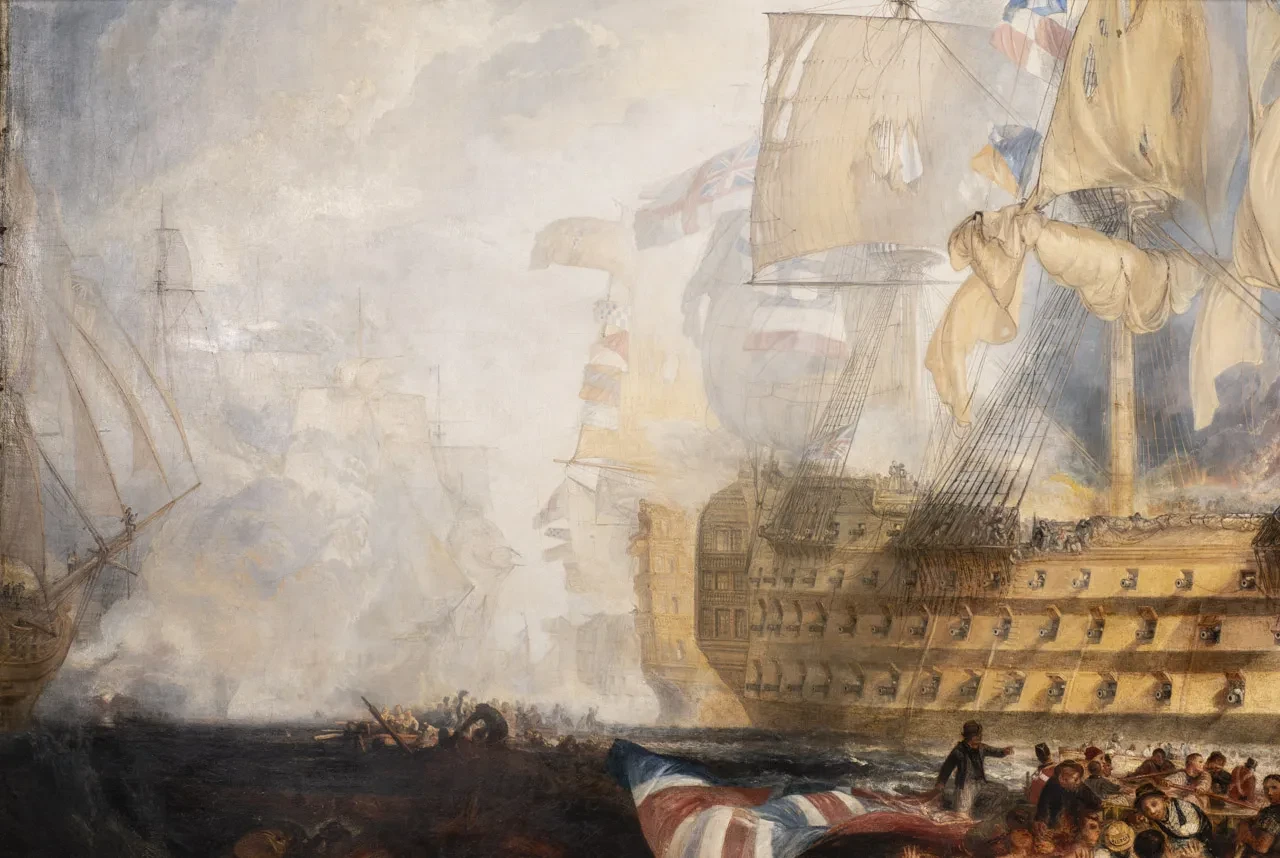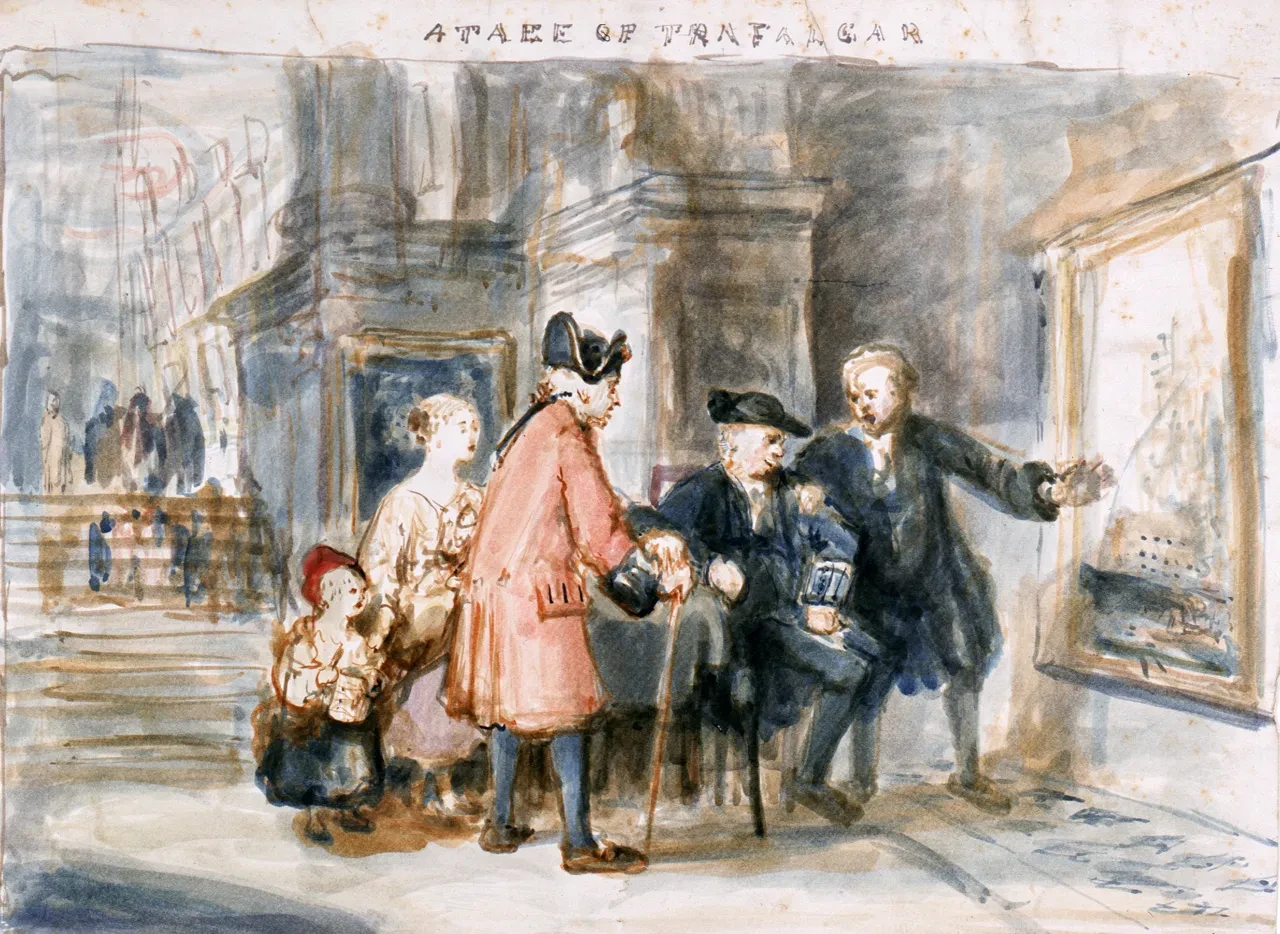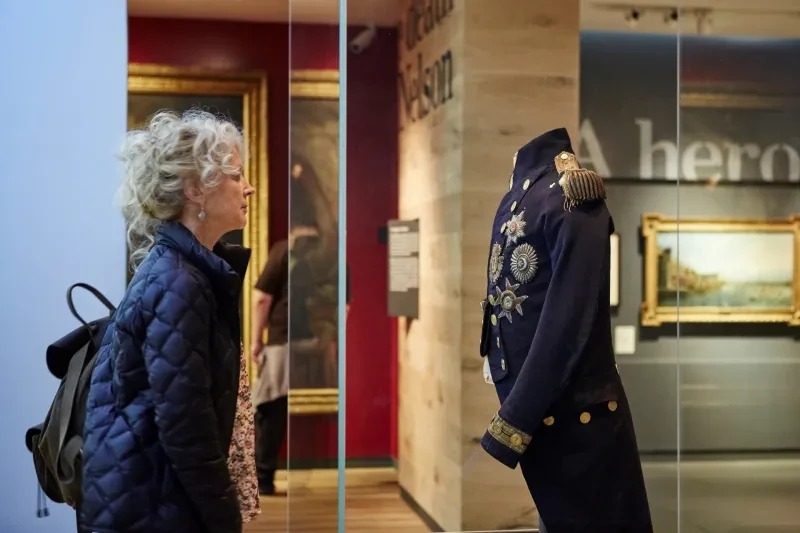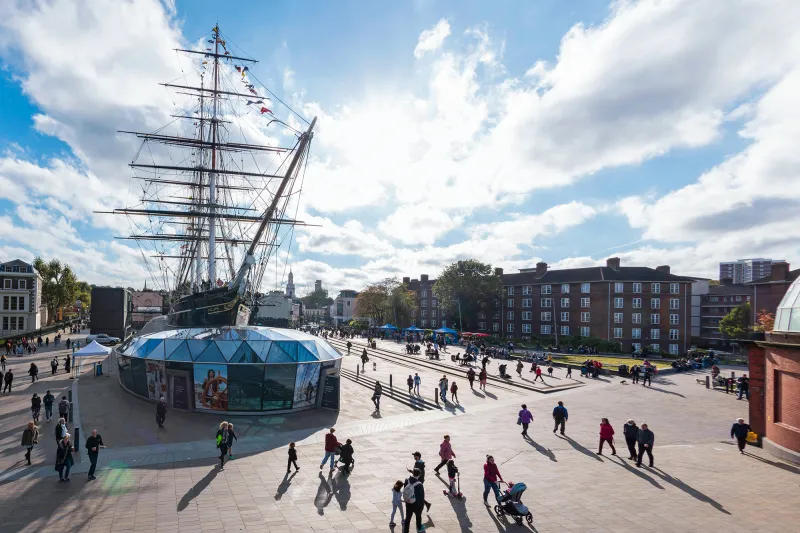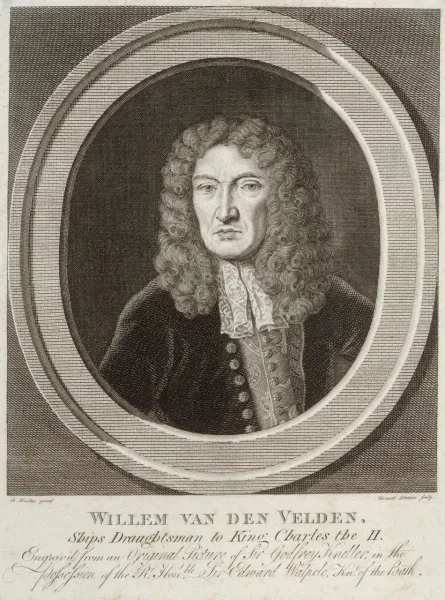
2025 marks the 250th anniversary of the birth of J.M.W. Turner, one of Britain’s most celebrated artists.
His largest artwork is The Battle of Trafalgar, a three-metre-wide canvas painted for King George IV in 1824. The painting depicts the decisive victory of the British Royal Navy over a combined French and Spanish fleet off Cape Trafalgar on 21 October 1805.
Today, The Battle of Trafalgar is a major highlight in the collections of Royal Museums Greenwich. But when it was first unveiled at St James’s Palace, it received a mixed reception.
Is The Battle of Trafalgar Turner’s biggest failure or an unfairly maligned masterpiece? To coincide with the publication of her new book J.M.W. Turner’s 'The Battle of Trafalgar': Commemoration and Controversy, curator Katherine Gazzard explores the history of this contested artwork.
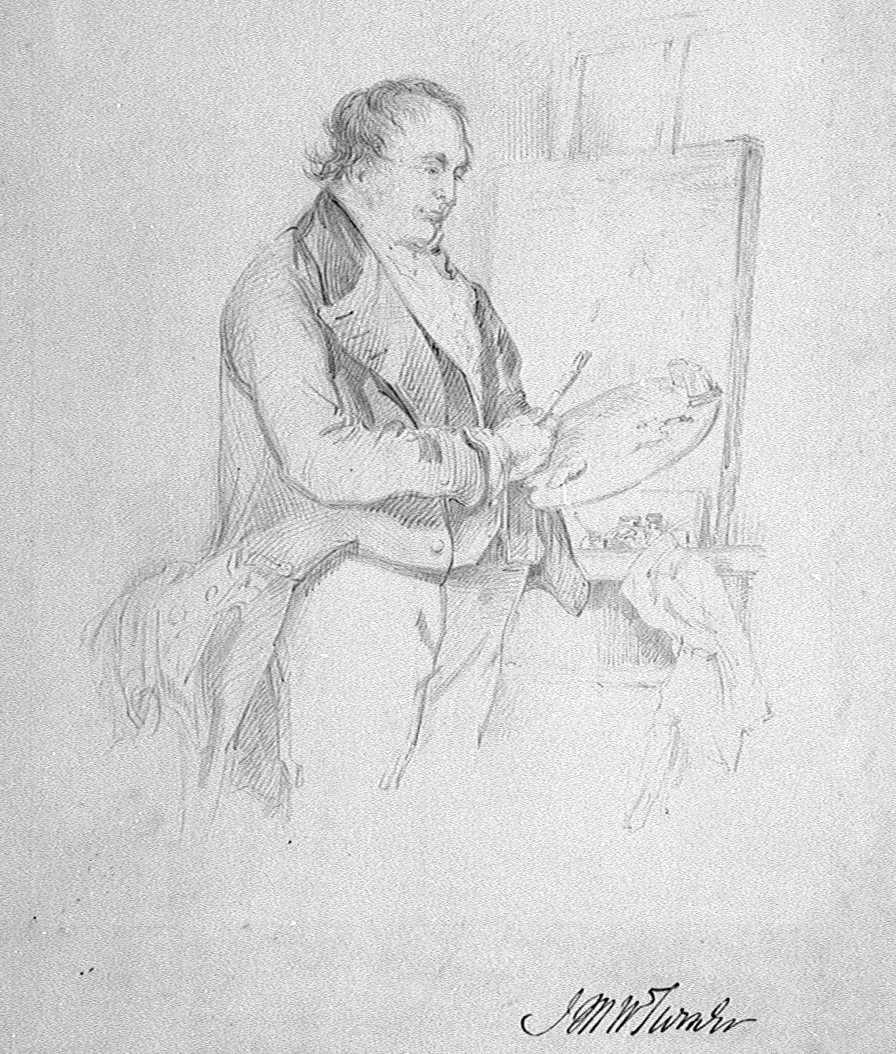
Who was J.M.W. Turner?
Joseph William Mallord Turner was baptised in Covent Garden, London, on 14 May 1775.
His precise date of birth is not recorded. In later life, he insisted that he had been born on Saint George’s Day (23 April), which was also the supposed birthday of William Shakespeare. This claim may have been true, or it may have been wishful thinking on Turner’s part. He perhaps hoped that association with England’s patron saint and its most famous playwright would help secure his own status as a national treasure.
At a time when most artists came from middle-class families, Turner proudly emphasised his humble origins. The son of a barber, he kept his Cockney accent throughout his life, even as he ascended to the highest ranks of the artistic establishment.
He exhibited regularly at the Royal Academy’s annual summer shows, becoming an Associate of the Academy in 1799 and a full member three years later.
At the same time as collecting these official accolades, Turner created works that broke away from longstanding artistic conventions, gaining a reputation as an innovator. He painted a broad variety of subjects, including landscapes and historical scenes, but had an enduring fascination with the sea.
The cultural significance of the Battle of Trafalgar
The Battle of Trafalgar was a major source of inspiration for Turner, as it was for many artists and writers of his time.
Trafalgar’s immense cultural impact was partly due to the spectacular nature of the British victory. With 27 ships-of-the-line to their opponents’ 33, the Royal Navy were outnumbered. The fleet’s commander, Vice-Admiral Lord Horatio Nelson, employed a risky tactical approach to overcome this disadvantage, splitting his ships into two columns and ordering them to sail directly at the enemy.
Although initially exposed to the French and Spanish guns, the British ships were able to unleash devastating fire when they broke through the allied line. Twenty-two French and Spanish ships were captured or destroyed. The British, meanwhile, did not lose any ships.
Yet the triumph was marred by tragedy. Over 4,000 French and Spanish sailors lost their lives, and the British sustained 456 fatalities.
Nelson himself was among the fallen. Even before the battle, he was a well-known public figure, famous for his success at sea, his personal charisma and his colourful private life. By losing his life at Trafalgar, he sealed his status as a legendary figure in British naval history.
Turner sketched Nelson’s flagship, the Victory, as it came into Sheerness with the Vice-Admiral’s body on board in December 1805. These sketches fed into his first painting of the action, The Battle of Trafalgar as Seen from the Mizen Starboard Shrouds of the ‘Victory’, which he completed in 1808. He never sold this painting, and it remained in his studio-gallery throughout his life.
In the 1820s, Turner was commissioned by King George IV to produce a new painting of the battle for display in St James’s Palace.
Turner’s royal commission
George IV’s love of spectacle shaped his public reputation, and he was often criticised for his extravagant spending habits. At St James’s Palace, he sought to create a display celebrating naval triumph.
He already owned a large-scale painting of one British victory at sea – Philippe-Jacques de Loutherbourg’s Battle of the Glorious First of June, which depicted a naval engagement from the summer of 1794. To hang alongside this picture, George wanted an equally vast representation of the Battle of Trafalgar.
Together, the pair would represent the first and last major sea battles of Britain’s recent wars against France. The King hired Turner to produce the Trafalgar picture in 1822 and paid him a total of £500 for the work.
Examining the details
In The Battle of Trafalgar, Turner placed the Victory in the centre. Nelson himself is not visible, but symbolic details allude to his fate. Signal flags fluttering from the ship’s mainmast spell out the word ‘duty’, alluding both to the famous message that Nelson sent to his ships before the battle (‘England expects that every man will do his duty’) and also to some of his dying words (‘Thank god I have done my duty’).
The background of the painting is filled with hulls, sails, masts and smoke, evoking the chaotic close-range fighting that ensued after the British fleet broke the French and Spanish line.
Turner does not hide the human cost of this violence. A horrifying life-and-death struggle dominates the foreground with drowning sailors clinging desperately to wreckage from the damaged ships.
Seen as a whole, the painting carries several layers of meaning. It combines a celebration of maritime victory with a tribute to a national hero, an ode to ordinary sailors and a meditation on the horrors of war.
'Glaring falsehoods'
The Battle of Trafalgar was installed in the Ante Room, next to the Throne Room, at St James’s Palace in May 1824. Within days of its unveiling, the artist Benjamin Robert Haydon recorded in his diary that the government was ‘not satisfied’ with the picture.
Naval historian William James accused Turner of including ‘glaring falsehoods’, pointing out that the artist had blurred together several distinct phases of the battle. Vice-Admiral Sir Thomas Masterman Hardy, who had been Nelson’s flag captain on the Victory, likened the painting to ‘a street scene’ and insisted that ‘the ships had more the effect of houses than men-of-war’.
Yet these criticisms missed the point of what Turner was trying to achieve. His intention had been to capture the human drama of the battle rather than the facts of the action.
Later responses to the painting were more positive. As Trafalgar faded from living memory and the Royal Navy adopted the new technology of steam power, Turner’s picture came to be viewed nostalgically as a memorial to the bygone age of sail. In 1858, The Illustrated London News described the painting as ‘a graphic illustration of the maritime warfare of the past’.
The painting comes to Greenwich
Mired in controversy, The Battle of Trafalgar only remained at St James’s Palace for five years. In 1829, George IV donated it to the National Gallery of Naval Art at Greenwich Hospital. It has been suggested that the King wanted to get rid of the painting because he was embarrassed by the criticism that it had received. However, his actions showed his support for a major public museum.
Established on the banks of the River Thames by Queen Mary II in 1695, Greenwich Hospital provided care and accommodation for elderly and disabled naval veterans. One of its most famous rooms was the Painted Hall, named for the murals that covered its walls and ceiling.
The National Gallery of Naval Art – often known simply as the Naval Gallery – opened in this space in April 1824. It provided a visual history of British maritime activity through the display of portraits, battle paintings, sculpture, ship models and uniforms.
George IV was a prominent supporter of the gallery, presenting a gift of portraits from the royal collection in 1824. Five years later, he gave his two large-scale naval battle pictures, Turner’s Battle of Trafalgar and De Loutherbourg’s Battle of the Glorious First of June. These paintings became centrepieces of the gallery’s displays. A late nineteenth-century photograph shows them hanging on either side of the Main Hall, one in the middle of each wall.
Art critics and travel writers often remarked that Greenwich Hospital was a fitting home for The Battle of Trafalgar because of its role providing care for retired sailors. Some of the Hospital’s residents may have identified with the figures battling for survival in the foreground of the work. In a sketch from the 1830s, John Burnet depicted a pair of naval pensioners showing the painting to a group of gallery visitors.
The Naval Gallery remained a popular public attraction for many decades. It eventually closed in 1936, but that was not the end for its collection, which was transferred on long-term loan to the newly established National Maritime Museum (now part of Royal Museums Greenwich).
Turner’s painting became a foundational artwork in the Museum’s collection, and it remains one of the star objects to this day.

Read the full story
Find out more about Turner’s only royal commission in J.M.W. Turner's 'The Battle of Trafalgar': Commemoration and Controversy, by Katherine Gazzard, Curator of Art at Royal Museums Greenwich.
The book charts the painting’s tumultuous journey, from its initial negative reception to becoming one of the treasures of Royal Museums Greenwich’s collection.
The book is part of the ‘Spotlight’ series, which shines a light on special items in the National Maritime Museum’s collections.


